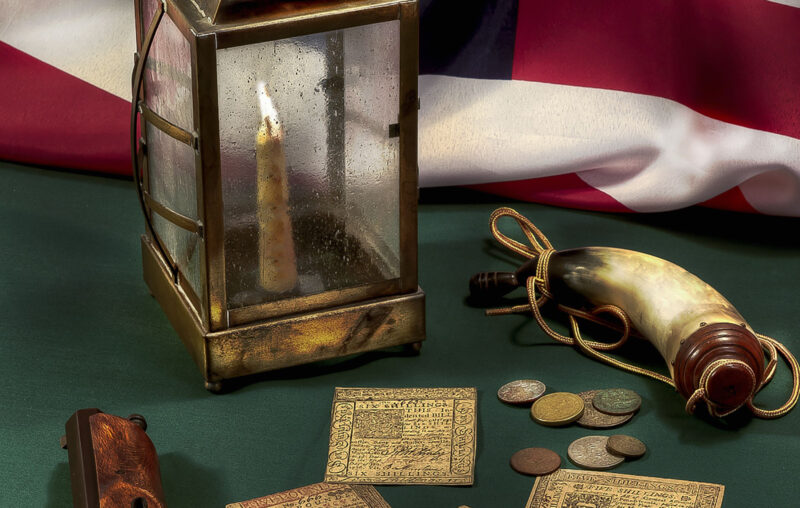


America’s 250th birthday is just a few years away but Americans are still not entirely clear about why their ancestors told Mother that they had to move out of her house and into their own place. If pressed, most will mutter something about taxation without representation. That is not so much wrong as woefully incomplete. Even the mighty Declaration of Independence elides much of the story.
The road to independence, the Imperial Crisis as some term it, began with resistance to the Stamp Act, which indeed was a type of tax but not, on its face, a particularly onerous one. So the key to understanding the independence movement is to understand why the colonists reacted to the Stamp Act as vigorously as they did. With the sort of luck that aids the diligent, I unearthed 15 years ago an unpublished and mis-cataloged contemporary history of the Stamp Act that accorded well with a theory that I had been developing with my former colleague at the University of Virginia, economist Ron Michener.
After the usual pleasantries, it began:
I must observe that it is not the Stamp Act or New Duty Act alone that had put the Colonies so much out of humour tho the principal Clamour has been on that Head but their distressed Situation had prepared them so generally to lay hold of these Occasions, and how they came to be so I must trace back to commencement of the late War.
The full text of the document, which was anonymously penned in 1768, will be published for the first time in my forthcoming chapter “Consequences Unintended: The Bubble Act and American Independence” in Helen Paul and D’Maris Coffman’s The Bubble Act: New Perspectives from Passage to Repeal and Beyond. The document is a difficult slog for the uninitiated but once you get past the old timey language and long-forgotten allusions, its message is clear: The colonists were mad at Mom because her trade and monetary policies were hurting them, a lot, but she did not care. The Stamp Act taxes constituted the last straw, the last silver straw as we will see.
Although the details are tricky, the story can be easily told. During the French and Indian War (1754-1763), money flooded into the colonies from 1) British wartime expenditures in the colonies made in specie (gold and silver coin); 2) colonial privateering (specie earned by seizing and selling French merchant ships); 3) colonial trade with the enemy in the West Indies (also resulting in specie payments); 4) the emission by each colony of bills of credit (fiat paper money) to fund the war effort. More money meant higher prices, including for real estate, which tripled in price by 1760.
During the boom, many colonists borrowed to fund new businesses or to speculate in real estate. Trade credit and mortgages generally had to be repaid within a few years. But soon French prizes became scarce, British military expenditures shifted, it became more difficult to trade with the West Indies, and bills of credit emissions slowed. When the war ended, money flow reversed, and with it business prospects.
The colonists had suffered from postwar depressions before, but this one was much worse than expected because British authorities cracked down on illicit colonial trade, and in the 1764 Currency Act forbade the colonies from emitting new bills of credit or slowing the redemption of the outstanding bills. Real estate and merchandise prices plummeted in 1763 and 1764 as mortgage and trade debts fell due. Unable to repay or refinance, many borrowers defaulted, were sued, and had their assets sold at sheriff sale for pence on the pound (pennies on the dollar). Back then, that meant languishing until death in a debtors’ prison worse than “the French Kings Gallies, or the Prisons of Turkey or Barbary.”
The colonists begged to be able to trade with the French West Indies and the Spanish once again in order to replenish their specie stocks, but the British responded by redoubling their trade enforcement measures. The middle colonies, which had always issued fiat money responsibly, pleaded to be allowed to make new emissions or allow bills issued during the war due to be called in to continue to circulate. Again, the British denied them. When the colonists tried to form commercial banks they were denied charters and met with stern warnings about the consequences of violating the Bubble Act.
Instead of relief, the British offered the Stamp Act, which mandated a tax to be paid in specie, of which the colonists had little remaining. Colonists wailed in newspaper op-eds that they were being crushed by their own parent. “Another Farmer,” for example, blamed Pennsylvania’s “bankruptcies, poverty and want” on Parliament for passing the Currency Act and other laws “incompatible … with the rights, liberties, and privileges of English subjects.”
The Stamp Act could not stand, and it did not. Mom backed down but she refused to give her babies more autonomy so tensions continued to escalate until Thomas Paine gave the colonists a dose of common sense and convinced them it was time to move out and move on. Thereafter, Americans controlled their own money policies. From the end of the Revolutionary War until 1933, the policies they chose were often sound, and hence a great boon to a growing nation and a maturing economy. Since then, well, that’s a whole other story.
TELL YOUR FRIENDS ABOUT CITIZENS JOURNAL Please keep us publishing – DONATE




